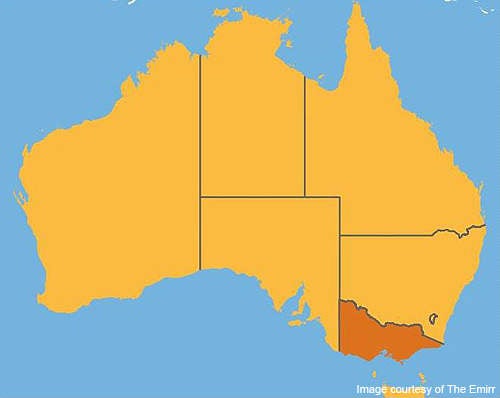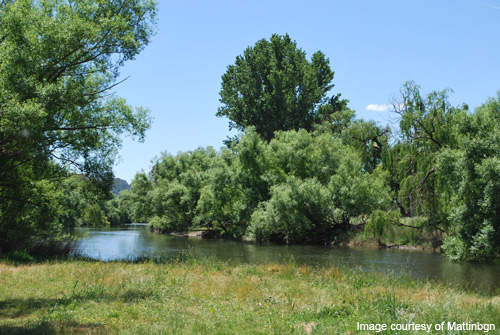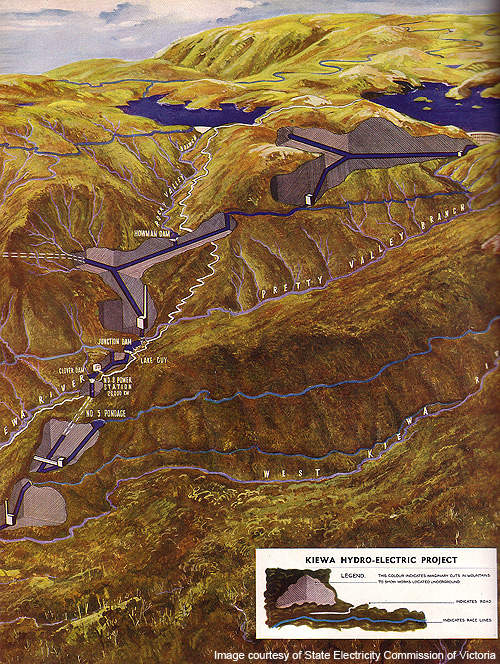Bogong Power Station is located near Bogong Village at the base of Lake Guy in the Alpine National Park of Victoria. It was commissioned in November 2009 and is owned and operated by AGL Energy.
It is the largest hydropower project in the country in the last 27 years.
The $240m project provides 140MW of ultra fast power during peak demands.
It generates about 94,000MWh while eliminating 88,000t of green house gas emissions a year.
At the same time it provides economic and recreational benefits to the region.
Bogong power station is the fourth and last hydro project added to the Kiewa hydroelectric scheme, situated 300km north-east of Melbourne. The other three projects of the scheme are McKay Creek power station, Clover power station and West Kiewa power station.
Bogong power station details
The power station consists of two vertical shafts, one kilometre long steel-lined high pressure tunnel and a tail race outfall.
As the plant does not have a dam, electricity is produced by harnessing the water released by McKay Creek power station. A seven kilometre long and five meter diameter head-race tunnel carries water from McKay Creek to the Bogong power station. It is the largest hard rock tunnel constructed in the southern hemisphere in 40 years.
The turbines include two 70MW Francis turbines. The underground power station has a step-up transformer and a switch gear.
The roof of the power station has been covered with a layer of liquid rubber, with the entrance supported by 15m high terramesh walls to provide access to the building and visitor centre.
Water from the Bogong power station flows out to the existing Clover power station, and finally into the river. The river water is refilled three times a year from snowfalls.
Development of the hydropower project
The project was planned to be constructed along with McKay Creek upstream and the Clover and West Kiewa power stations in 1950. It was formerly known as Kiewa No 2 and was designed to have an installed capacity of 95MW, with a dam to be constructed below the McKay Creek power station. A surface power house was planned to be built upstream of Lake Guy at the intake of the Clover power station.
The project however could not be carried forward due to other priority projects in Victoria. Although the Kiewa scheme generated and provided 241MW to the Victoria state, power shortages in 2001 resulted in re-considering the project.
During the pre-feasibility studies in 2001, it was decided in order to advance the project, construction of dam had to be avoided as it could be opposed by the local community in Alpine National Park. Further, in order to maintain the natural flow of the river and ecological balance of the surroundings, a decision to construct a tunnel to use the existing water resource of McKay Creek power station was finalised. The power station was also decided to be built underground to reduce the impact of the project on the Alpine National Park.
Construction of the Bogong power station commenced after obtaining the appropriate environmental and regulatory approvals in September 2006.
Grid network
Power from the Bogong plant is transmitted to the sub-station located at Mt Beauty terminal. A 250m long and 220kV single-circuit cable connects the output to the existing transmission line.
Contracts awarded to companies involved in Bogong
Pre-feasibility study and project management services were provided by SKM Consultants.
AGL Energy awarded three engineering, procurement and construction (EPC) contracts in 2006. The design and construction (D&C) contract was awarded to McConnell Dowell, electrical and mechanical works contract to Toshiba International and the balance of plant contract to Corke Instrument Engineering.
Halcrow provided the detailed design and specifications on a sub-contract basis to McConnell Dowell.
Tunnels were bored using tunnel boring machines (TBM) supplied by Robbins. The geo-technical services and tunnel, shaft and power house construction were supervised by GHD. Rubber proofing on the roof of the power station was provided by FEW and its subsidiary Liquid Rubber Melbourne.
Underground cables were installed by J&C under a contract awarded in October 2009.
The terramesh retaining walls were designed and constructed by Geofabrics on a sub-contract from Halcrow. Other contractors involved in the project are Norton Rose, Mining Measurement Services and the Aveng Group.






